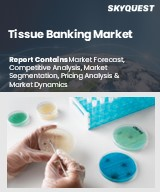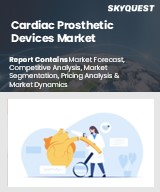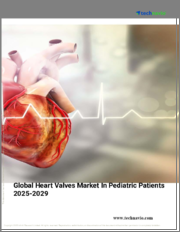
|
시장보고서
상품코드
1835243
심장판막 기기 시장 : 변위치, 제품 유형, 연령층, 최종사용자별 - 세계 예측(2025-2032년)Heart Valve Devices Market by Valve Position, Product Type, Age Group, End User - Global Forecast 2025-2032 |
||||||
심장판막 기기 시장은 2032년까지 CAGR 10.19%로 190억 1,000만 달러로 성장할 것으로 예측됩니다.
| 주요 시장 통계 | |
|---|---|
| 기준연도 2024 | 87억 4,000만 달러 |
| 추정연도 2025 | 96억 3,000만 달러 |
| 예측연도 2032 | 190억 1,000만 달러 |
| CAGR(%) | 10.19% |
심장 판막 장치 시장을 형성하는 첨단 임상, 규제, 운영 촉진요인 및 이해 관계자의 전략에 대한 종합적인 방향성
심장 판막 장치 분야는 가속화되는 임상적 요구와 급속한 기술 발전의 교차점에 위치하고 있습니다. 기기 설계, 영상 진단, 저침습적 치료 기술의 발전은 임상의의 전문성 확대 및 진화하는 치료 경로와 결합하여 심장판막증 치료 알고리즘을 재구성하고 있습니다. 환자 인구가 고령화되고, 진단 검출이 향상됨에 따라 기기 제조업체, 의료 시스템 및 전문 클리닉의 이해관계자들은 혁신을 측정 가능한 임상적 이익으로 전환할 수 있는 기회와 책임에 직면해 있습니다.
따라서 이 분야의 전략 수립에는 규제의 복잡성, 상환의 다양성, 경피적 카테터 및 수술적 판막 치료의 운영 현실을 고려한 통합적 관점이 필요합니다. 이 소개에서는 임상적 증거의 개발, 채택의 원동력, 공급망의 강인함의 상호관계를 강조함으로써 주요 요약의 프레임워크를 구성합니다. 이러한 차원별 분석을 바탕으로 의사결정자는 역동적인 경쟁 환경에서 환자들에게 지속적인 가치를 제공할 수 있는 구상에 우선순위를 부여할 수 있습니다.
기술의 발전, 증거의 성숙, 전략적 파트너십의 융합이 임상 채택, 공급망, 경쟁 역학을 재구성하는 방법
최근 수년간 제품의 점진적인 개선에 그치지 않고 치료 제공 모델과 상업적 역학을 재구성하는 혁신적인 변화가 일어나고 있습니다. 장치의 소형화, 차세대 조직 치료, 이미지 유도 이식 기술의 강화는 전체적으로 시술의 위험도를 낮추고, 보다 최소 침습적인 개입에 대한 후보를 넓혀주었습니다. 동시에, 증거 창출이 성숙해지면서 무작위 시험과 실제 임상 등록이 가이드라인업데이트와 지불자 정책에 점점 더 많은 정보를 제공하고 있으며, 특정 환자 코호트에서 채택이 가속화되고 있습니다.
또한 기술 개발자, 영상 진단 전문가, 서비스 프로바이더 간의 업계 재편과 전략적 제휴는 새로운 규모의 효율성을 창출하는 동시에 역량을 집중시키고 있습니다. 동시에 공급망 민첩성과 부품 조달이 전략적 우선순위로 떠오르면서 제조업체들은 제조 거점과 공급업체를 다각화해야 하는 상황에 직면해 있습니다. 이러한 변화를 종합하면 경쟁 우위를 유지하고 환자 중심의 결과를 보장하기 위해 기업은 제품 포트폴리오, 시장 진출 전략, 시판 후 조사 프레임워크를 재검토해야 합니다.
2025년 미국의 관세 정책이 심장 판막 장치 공급망 전체의 비용 구조, 조달 전략, 조달 관행에 미치는 연쇄적인 영향 평가
미국의 2025년 중 관세 도입은 심장 판막 기술을 포함한 전체 의료기기 카테고리공급망 경제와 조달 전략에 큰 영향을 미쳤습니다. 국경 간 부품 공급과 완제품 이동에 의존하던 제조업체들은 투입 비용 상승과 마진 압박에 직면하여 단기적인 가격 조정과 Cost-to-Serve 분석에 대한 새로운 노력을 기울이고 있습니다. 이에 대응하기 위해 조달 리더들은 대체 공급업체를 인증하고, 가능한 경우 생산을 지역화하고, 공급 및 비용 노출을 안정화하기 위해 장기 계약을 재협상하기 위한 노력을 가속화했습니다.
이와 병행하여 임상 관계자 및 병원 시스템은 재고 계획 및 자본 조달 일정에 잠재적인 영향을 경험했습니다. 혼란을 완화하기 위해 많은 의료기관은 선택적 판막증 치료의 리드 타임을 연장하고, 임상적으로 적절한 경우 국내 조달을 우선시하고, 우선 배정을 보장하기 위해 제조업체와의 협력을 강화했습니다. 앞으로의 관세 환경은 수직적 통합, 조달처의 중복성, 생산단가를 낮추기 위한 자동화 투자에 대한 인센티브를 강화하는 동시에, 상업 계약 전반에 걸쳐 투명한 규제 준수와 무역 리스크 관리의 중요성을 강화했습니다.
부문별 분석을 통해 밸브의 위치, 제품 아키텍처, 환자 연령 및 의료 환경이 기기 설계의 우선순위, 임상 요구 사항 및 상용화 경로를 결정하는 방법을 밝힙니다.
미묘한 세분화 렌즈를 통해 밸브 위치, 제품 아키텍처, 환자 인구 통계 및 치료 환경 전반에 걸쳐 임상 수요와 상업화 경로를 형성하는 차이의 역학을 밝혀냅니다. 밸브의 위치에 따라 대동맥, 승모판막, 폐동맥, 삼첨판막에 걸쳐 시장을 조사했으며, 각 밸브는 고유한 해부학적 과제, 장치 설계의 필수 사항, 임상의의 교육 요건을 제시합니다. 예를 들어 대동맥 중재술은 여전히 경카테터 접근법에서 가장 잘 확립된 분야이지만, 승모판막 및 삼첨판막 치료에서 재위치 및 수리 지향 기술에 대한 투자가 증가하고 있습니다. 이러한 차이는 명확한 증거의 필요성과 장비의 반복을 촉구하고 있습니다.
목차
제1장 서문
제2장 조사 방법
제3장 개요
제4장 시장 개요
제5장 시장 인사이트
제6장 미국 관세의 누적 영향 2025
제7장 AI의 누적 영향 2025
제8장 심장판막 기기 시장 : 밸브 위치별
- 대동맥
- 승모판
- 폐
- 삼첨판
제9장 심장판막 기기 시장 : 제품 유형별
- 기계
- Bileaflet
- 경사 디스크
- 조직
- 소 심막
- 돼지
제10장 심장판막 기기 시장 : 연령층별
- 성인용
- 소아
제11장 심장판막 기기 시장 : 최종사용자별
- 외래 수술 센터
- 병원
- 커뮤니티 병원
- 삼차 의료 병원
제12장 심장판막 기기 시장 : 지역별
- 아메리카
- 북미
- 라틴아메리카
- 유럽, 중동 및 아프리카
- 유럽
- 중동
- 아프리카
- 아시아태평양
제13장 심장판막 기기 시장 : 그룹별
- ASEAN
- GCC
- EU
- BRICS
- G7
- NATO
제14장 심장판막 기기 시장 : 국가별
- 미국
- 캐나다
- 멕시코
- 브라질
- 영국
- 독일
- 프랑스
- 러시아
- 이탈리아
- 스페인
- 중국
- 인도
- 일본
- 호주
- 한국
제15장 경쟁 구도
- 시장 점유율 분석, 2024
- FPNV 포지셔닝 매트릭스, 2024
- 경쟁 분석
- Edwards Lifesciences Corporation
- Medtronic plc
- Abbott Laboratories
- Boston Scientific Corporation
- LivaNova PLC
- CryoLife, Inc.
- MicroPort Scientific Corporation
- Meril Life Sciences Private Limited
- Lepu Medical Technology(Beijing) Co., Ltd.
- JenaValve Technology, Inc.
The Heart Valve Devices Market is projected to grow by USD 19.01 billion at a CAGR of 10.19% by 2032.
| KEY MARKET STATISTICS | |
|---|---|
| Base Year [2024] | USD 8.74 billion |
| Estimated Year [2025] | USD 9.63 billion |
| Forecast Year [2032] | USD 19.01 billion |
| CAGR (%) | 10.19% |
A comprehensive orientation to the advanced clinical, regulatory, and operational drivers reshaping the heart valve devices market and stakeholder strategies
The heart valve devices sector stands at the intersection of accelerating clinical need and rapid technological progression. Advances in device design, imaging, and minimally invasive delivery techniques have converged with expanded clinician expertise and evolving care pathways, reshaping treatment algorithms for valvular heart disease. As patient populations age and diagnostic detection improves, stakeholders across device manufacturers, health systems, and specialty practices face both opportunity and responsibility to translate innovation into measurable clinical benefit.
Consequently, strategic planning in this sector requires an integrated perspective that considers regulatory complexity, reimbursement variability, and the operational realities of delivering transcatheter and surgical valve therapies. This introduction frames the executive summary by emphasizing the interplay between clinical evidence development, adoption drivers, and supply chain resilience. By grounding analysis in these dimensions, decision-makers can prioritize initiatives that deliver durable value to patients while navigating a dynamic competitive landscape.
How converging technological advances, evidence maturation, and strategic partnerships are reconfiguring clinical adoption, supply chains, and competitive dynamics in the sector
Recent years have produced transformative shifts that extend beyond incremental product improvements to reconfigure care delivery models and commercial dynamics. Device miniaturization, next-generation tissue treatments, and enhanced imaging-guided implantation techniques have collectively lowered procedural risk profiles and broadened candidacy for less invasive interventions. At the same time, evidence generation has matured, with randomized trials and real-world registries increasingly informing guideline updates and payer policies, thereby accelerating adoption in selected patient cohorts.
Moreover, industry consolidation and strategic partnerships between technology developers, imaging specialists, and service providers have concentrated capabilities while creating new scale efficiencies. Concurrently, supply chain agility and component sourcing have risen as strategic priorities, prompting manufacturers to reassess manufacturing footprints and vendor diversification. Taken together, these shifts require organizations to reassess product portfolios, market access strategies, and post-market surveillance frameworks to sustain competitive advantage and ensure patient-centered outcomes.
Assessing the cascading effects of United States tariff policy in 2025 on cost structures, sourcing strategies, and procurement practices across heart valve device supply chains
The introduction of tariffs in the United States during 2025 introduced notable implications for supply chain economics and sourcing strategies across medical device categories, including heart valve technologies. Manufacturers dependent on cross-border component supply and finished-goods movement encountered increased input costs and margin pressure, prompting near-term price adjustments and renewed focus on cost-to-serve analysis. In response, procurement leaders accelerated efforts to qualify alternate suppliers, regionalize production where feasible, and renegotiate long-term contracts to stabilize supply and cost exposure.
In parallel, clinical stakeholders and hospital systems experienced potential impacts on inventory planning and capital procurement timelines. To mitigate disruption, many institutions extended lead times for elective valve procedures, prioritized domestic sourcing when clinically appropriate, and intensified collaboration with manufacturers to secure prioritized allocations. Looking forward, the tariff environment heightened incentives for vertical integration, sourced redundancy, and investment in automation to reduce unit production costs, while also reinforcing the importance of transparent regulatory compliance and trade risk management across commercial contracts.
Segment-specific analysis revealing how valve position, product architecture, patient age, and care setting collectively dictate device design priorities, clinical requirements, and commercialization pathways
A nuanced segmentation lens reveals differential dynamics across valve position, product architecture, patient demographics, and care settings that shape clinical demand and commercialization pathways. Based on Valve Position, market is studied across Aortic, Mitral, Pulmonary, and Tricuspid, each presenting unique anatomical challenges, device design imperatives, and clinician training requirements. For example, aortic interventions remain the most established arena for transcatheter approaches, while mitral and tricuspid therapies increasingly attract investment in repositionable and repair-oriented technologies. These distinctions drive distinct evidence needs and device iterations.
Based on Product Type, market is studied across Mechanical and Tissue. The Mechanical is further studied across Bileaflet and Tilting Disc. The Tissue is further studied across Bovine Pericardial and Porcine, and material selection continues to influence durability profiles, anticoagulation strategies, and patient preference. Based on Age Group, market is studied across Adult and Pediatric, where pediatric applications demand bespoke sizing, growth-accommodating designs, and long-term follow-up strategies that differ from adult therapeutic pathways. Based on End User, market is studied across Ambulatory Surgical Centers and Hospitals. The Hospitals is further studied across Community Hospital and Tertiary Care Hospital, and care setting influences procedural volumes, staffing competencies, capital equipment availability, and post-procedural care protocols. Integrating these segmentation dimensions yields targeted insights for clinical development prioritization, reimbursement engagement, and go-to-market sequencing that respond to heterogenous stakeholder requirements.
Regional dynamics that determine clinical adoption, regulatory navigation, and commercialization strategies across the Americas, Europe Middle East & Africa, and Asia-Pacific markets
Geographic dynamics continue to shape regulatory pathways, reimbursement landscapes, and deployment strategies for heart valve devices across principal global regions. In the Americas, advanced clinical adoption and high-volume interventional programs coexist with diverse payer models that demand robust value demonstrations and health-economic evidence. Many manufacturers view this region as a focal point for pivotal trials and early commercial launches, while also navigating regional differences in procurement practices and hospital purchasing structures.
Across Europe, Middle East & Africa, regulatory harmonization efforts and national reimbursement frameworks create a mosaic of access conditions, leading firms to tailor market access plans to country-specific timelines. Investment in local clinician training and registry participation has proven effective in accelerating adoption in certain European markets. In the Asia-Pacific region, demographic trends and rapidly expanding cardiovascular care capacity are driving strong interest in both transcatheter and surgical valve solutions; however, market entry strategies require careful alignment with local regulatory frameworks, cost-containment pressures, and partnership models that can support scale-up while ensuring clinical quality. Collectively, regional approaches must balance centralized R&D priorities with localized commercialization tactics to achieve sustainable market penetration.
Insights on how incumbent and emerging companies are differentiating through clinical evidence generation, platform innovation, manufacturing optimization, and value-based commercial models
Competitive positioning in the heart valve devices arena reflects a blend of legacy surgical expertise, emergent transcatheter capabilities, and differentiated platform strategies. Leading firms continue to invest in incremental device improvements such as delivery systems, leaflet materials, and anti-calcification processes, while challengers pursue disruptive innovations in repair technologies, polymeric leaflets, and imaging-integrated implantation systems. Partnerships with imaging and digital health companies augment device value propositions by improving procedural precision and enabling post-market outcome tracking.
Additionally, strategic focus areas for companies include expanding label indications through clinical programs, strengthening post-market evidence via registries, and optimizing manufacturing footprints to ensure quality and cost efficiency. Commercial models are evolving to reflect value-based contracting and outcome-linked reimbursement in select healthcare systems, necessitating stronger provider engagement and outcome measurement capabilities. Firms that combine robust clinical evidence, scalable manufacturing, and proactive market-access strategies are better positioned to convert technological advances into sustained clinical adoption and commercial performance.
Actionable strategic imperatives for executives to strengthen supply resilience, align evidence generation with payers, and invest in platform innovations to secure durable clinical and commercial advantage
Industry leaders should pursue a dual-track strategy that balances near-term operational resilience with medium-term innovation investment to capture evolving opportunities in valve therapy. In the near term, executives should prioritize supply chain diversification, including qualifying alternate component suppliers and exploring regional manufacturing options to reduce tariff and logistics exposure. Simultaneously, commercial teams should strengthen hospital partnerships and clinician education programs to preserve procedural volumes and ensure consistent device utilization across care settings.
Over the medium term, organizations must invest in clinically meaningful differentiation such as tissue treatments that extend durability, delivery systems that simplify implantation, and digital tools that support patient selection and follow-up. Companies should also align evidence plans with payer requirements early in product development to facilitate smoother market access. Finally, pursuing strategic collaborations-whether with imaging specialists, contract manufacturers, or regional distributors-will accelerate scale and reduce time to market, enabling firms to convert technical leadership into commercial advantage while maintaining focus on patient outcomes.
A rigorous mixed-methods research approach combining stakeholder interviews, clinical evidence review, regulatory analysis, and supply chain benchmarking to ensure actionable insights
The research synthesis underpinning this executive summary draws on a layered methodology that integrates primary stakeholder interviews, clinical literature review, regulatory documentation, and operational benchmarking. Primary qualitative interviews were conducted with clinicians, hospital procurement leaders, and device developers to surface real-world adoption drivers, procedural workflow considerations, and post-market surveillance practices. These insights were triangulated with peer-reviewed clinical trials, guideline committee statements, and regulatory approvals to ensure alignment between observed practice patterns and formal evidence thresholds.
To capture commercial and operational dynamics, the methodology incorporated supply chain mapping and vendor ecosystem analysis, examining manufacturing footprints, component sourcing dependencies, and distribution channels. Wherever possible, findings were validated through cross-referencing multiple independent sources and through iterative expert review to enhance reliability. This mixed-methods approach ensures that strategic recommendations rest on both empirical evidence and practical, on-the-ground knowledge of clinical and commercial realities.
A concise synthesis of how technological, clinical, and economic forces collectively define priorities for innovation, market access, and supply chain resilience in valve therapy
In summary, the heart valve devices landscape is undergoing a period of structural change driven by technological maturation, increasingly sophisticated evidence requirements, and shifting economic pressures. Devices are becoming less invasive, procedural precision is improving, and collaborative models are emerging that integrate imaging and digital tools to enhance outcomes. These trends create clear pathways for innovators, but they also raise the bar for manufacturability, regulatory preparedness, and post-market evidence collection.
As stakeholders navigate tariff-related cost pressures, varied regional access conditions, and the nuances of segment-specific demand, success will favor organizations that adopt an integrated strategy: resilient and adaptable supply chains, targeted clinical development that aligns with payer evidence needs, and commercial models that prioritize outcomes and provider partnerships. By focusing on these priorities, companies can convert scientific progress into reproducible clinical benefit and sustainable commercial performance across diverse care settings.
Table of Contents
1. Preface
- 1.1. Objectives of the Study
- 1.2. Market Segmentation & Coverage
- 1.3. Years Considered for the Study
- 1.4. Currency & Pricing
- 1.5. Language
- 1.6. Stakeholders
2. Research Methodology
3. Executive Summary
4. Market Overview
5. Market Insights
- 5.1. Surge in transcatheter mitral valve repair adoption driven by minimally invasive outcomes
- 5.2. Integration of AI-driven imaging analytics for preoperative planning and personalized valve selection
- 5.3. Development of next-generation bioprosthetic valves with anti-calcification polymer coatings
- 5.4. Expansion of transcatheter tricuspid valve implantation technologies for high-risk patient cohorts
- 5.5. Emergence of telemedicine-enabled remote monitoring solutions for postvalve replacement care
- 5.6. Growth in percutaneous valve-in-valve procedures reducing repeat open-heart surgeries
- 5.7. Focus on valve durability enhancements through novel tissue engineering and scaffold designs
- 5.8. Regulatory approvals accelerating commercialization of resorbable stented heart valve platforms
6. Cumulative Impact of United States Tariffs 2025
7. Cumulative Impact of Artificial Intelligence 2025
8. Heart Valve Devices Market, by Valve Position
- 8.1. Aortic
- 8.2. Mitral
- 8.3. Pulmonary
- 8.4. Tricuspid
9. Heart Valve Devices Market, by Product Type
- 9.1. Mechanical
- 9.1.1. Bileaflet
- 9.1.2. Tilting Disc
- 9.2. Tissue
- 9.2.1. Bovine Pericardial
- 9.2.2. Porcine
10. Heart Valve Devices Market, by Age Group
- 10.1. Adult
- 10.2. Pediatric
11. Heart Valve Devices Market, by End User
- 11.1. Ambulatory Surgical Centers
- 11.2. Hospitals
- 11.2.1. Community Hospital
- 11.2.2. Tertiary Care Hospital
12. Heart Valve Devices Market, by Region
- 12.1. Americas
- 12.1.1. North America
- 12.1.2. Latin America
- 12.2. Europe, Middle East & Africa
- 12.2.1. Europe
- 12.2.2. Middle East
- 12.2.3. Africa
- 12.3. Asia-Pacific
13. Heart Valve Devices Market, by Group
- 13.1. ASEAN
- 13.2. GCC
- 13.3. European Union
- 13.4. BRICS
- 13.5. G7
- 13.6. NATO
14. Heart Valve Devices Market, by Country
- 14.1. United States
- 14.2. Canada
- 14.3. Mexico
- 14.4. Brazil
- 14.5. United Kingdom
- 14.6. Germany
- 14.7. France
- 14.8. Russia
- 14.9. Italy
- 14.10. Spain
- 14.11. China
- 14.12. India
- 14.13. Japan
- 14.14. Australia
- 14.15. South Korea
15. Competitive Landscape
- 15.1. Market Share Analysis, 2024
- 15.2. FPNV Positioning Matrix, 2024
- 15.3. Competitive Analysis
- 15.3.1. Edwards Lifesciences Corporation
- 15.3.2. Medtronic plc
- 15.3.3. Abbott Laboratories
- 15.3.4. Boston Scientific Corporation
- 15.3.5. LivaNova PLC
- 15.3.6. CryoLife, Inc.
- 15.3.7. MicroPort Scientific Corporation
- 15.3.8. Meril Life Sciences Private Limited
- 15.3.9. Lepu Medical Technology (Beijing) Co., Ltd.
- 15.3.10. JenaValve Technology, Inc.



















